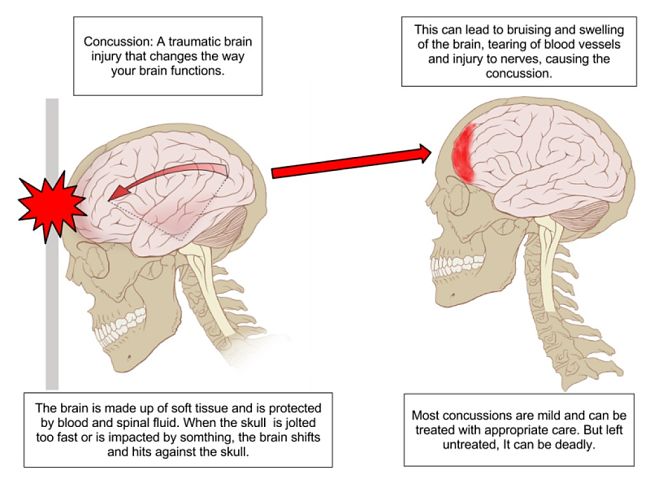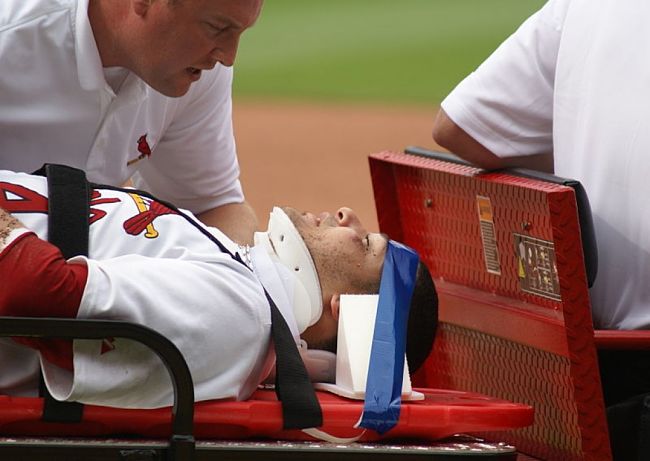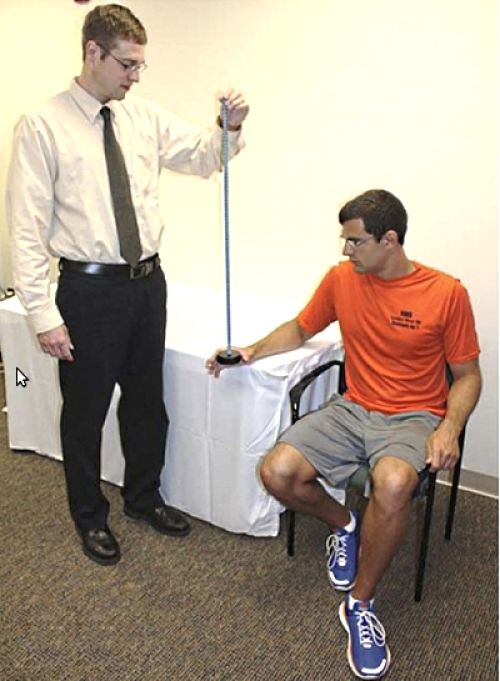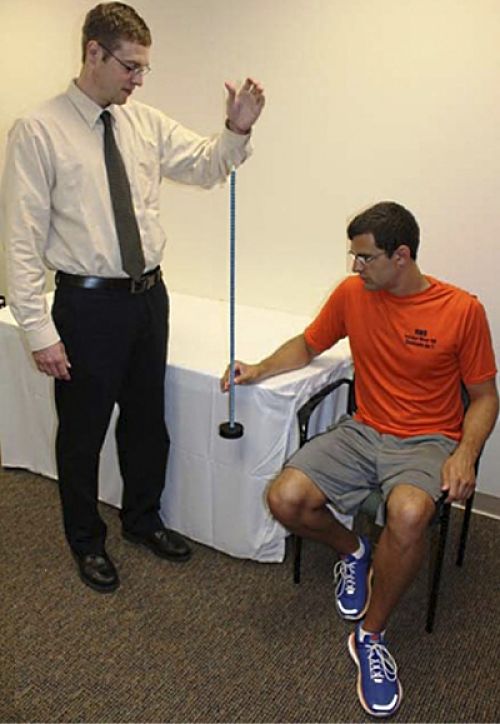Simple, Cheap, Smart Device Can Detect Concussion Effects on Sidelines
As the high school and college football seasons begin in the US and the Premier Football season starts in Britain the problem of what to do about concussion injuries remains unresolved.
How can you quickly tell if a player has received concussion damage to the brain, and whether they should be allowed to play on or not?
Up until now there has been no reliable way of knowing. All sorts of very expensive and highly sophisticated instruments have been proposed including ones fitted to the inside of helmets.
Such high-tech football helmets would monitor the amount of force applied to the helmet during contacts and collisions and transmit data via a wireless links to computer equipment on the sidelines.
But the cost for this equipment is astronomically high at more than $1,500 per helmet.
The side-line monitoring stations are also very expensive.
There are also concerns about how to interpret the information as it does not measure impairment to brain function or reaction time.
What medical terms need to know is whether there are early warning signs of impaired brain function that could be early warning signs of a concussion injury.




A Very Simple Way of Monitoring Changes in Reactions Time to Estimate The Effect of Concussion on Brain Function
Recent research has focused on finding a simply way to measure whether the player's reaction time has been impaired in any way.
Once again, the traditional ways of measuring changes in reaction time are very complicated, slow and expensive. It requires sophisticated computer software and equipment not available nor suitable for installing on the sideline of sporting events. Some researchers came up with a very innovative design shown in the images, which measures the time taken for a person to grab a falling weighted stick after it is released. The distance the stick falls before being grabbed is proportional to the reaction time.
A hockey puck, which is a simple weight and could be replaced by other similar weights, was glued to a long wooden dowel. Once again any plastic rod, a suitable weight would do the job.
The use of the device is simplicity itself. A tester stands next to an injured sports person sitting on a chair or bench. The puck and rod device is positioned in the open hand of the person being tested. Without letting the person know the tester suddenly drops the device. The athlete has been told to grab the rod immediately he or she sees it starting to fall. The tester uses calibrations on the rod to determine the distance the rod and puck fall before the athlete grabs it. This distance is a measure of the reaction time. It can be compared with the reaction times (as drop distances) tabulated for each individual in the team, or individual athletes. If the player’s reaction time was slowed significantly it would be a good early warning sign that the person was likely to be concussed.
The test is quick and easy to do. It can be repeated at half time or at other breaks in play if the player shows other signs of concussion. It is inexpensive and requires no complicated equipment. But is this simple test reliable.
The researchers tested the changes in reaction times measured by the puck and stick device of 28 male and female athletes were diagnosed with concussions. All the athletes were part of a larger group who has their reaction times measured before playing their chosen sports. The before and after tests were also made on a group of 28 males and female athletes who had no head injuries.
The the simple dowel and puck test of reaction times proved to be very reliable as an indicated by longer distances the red fell before being grabbed. The before and after results for the uninjured athletes were very similar. Follow-up tests confirmed that the athletes showing delayed reaction times were concussed.
Any significant drop in reaction time (increase in drop distance) could provide a reliable signal or early warning system that the brain has been affected, possibly a concussion has occurred. This would provide a strong message to management staff that the player should be withdrawn from the game, and taken away for more detailed testing by the club doctor or medical staff.
The researchers were quick to point out that the test is not a definitive one, and cannot replace the diagnosis provided by proper medical tests. But for rapid on-field testing where such equipment cannot be used the reaction time test is an invaluable tool. If players reaction times are lowered that are not going to be able to play the game at their peak level anyway. So the decision to keep the player off the field is a good one. Responses of individuals to head trauma vary greatly.
The reaction time test using a dropping stick is a cheap and effective way of getting an early warning system of possible concussion and impaired player performance that can be used for wide variety of sports.
Reference here